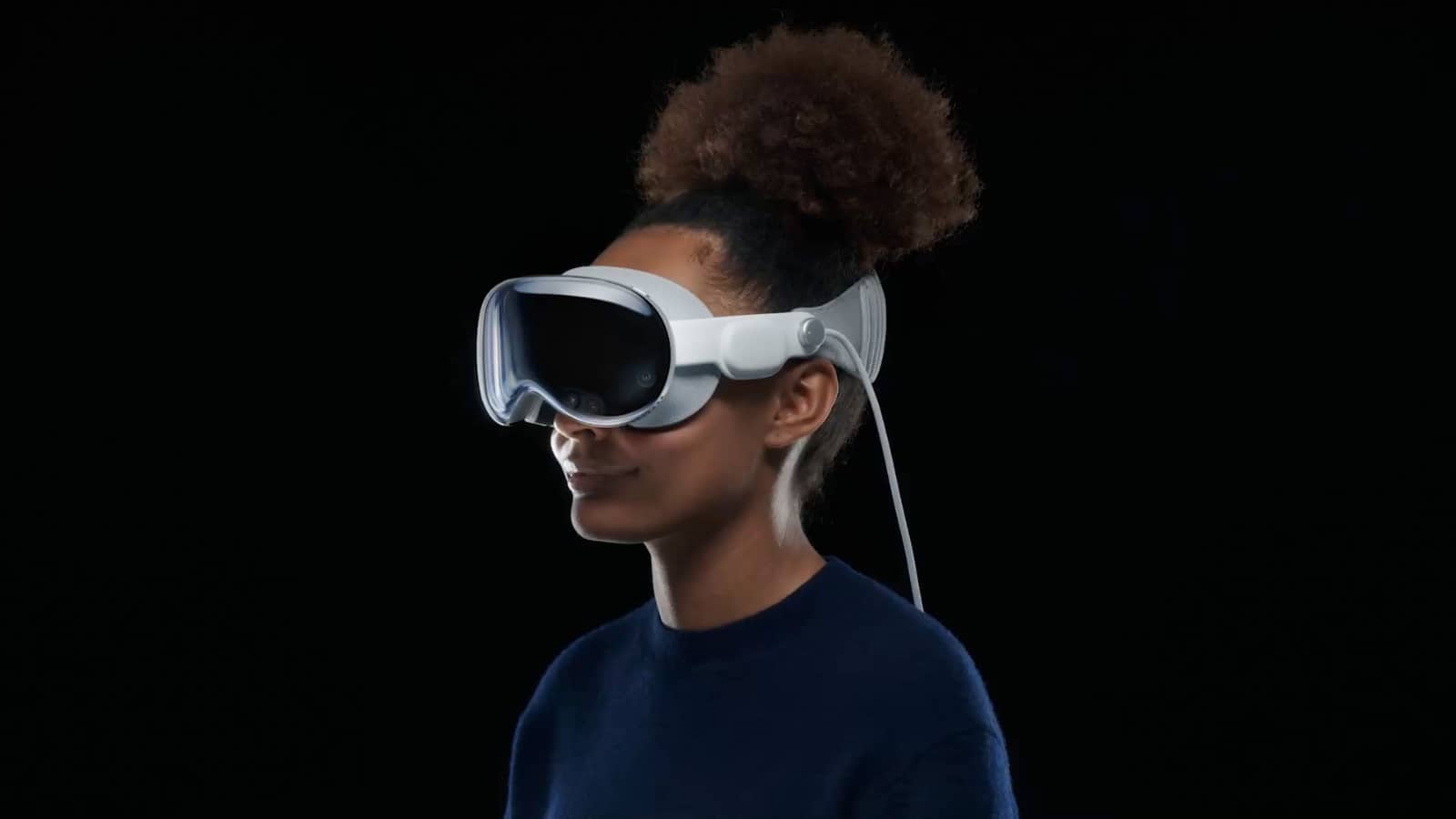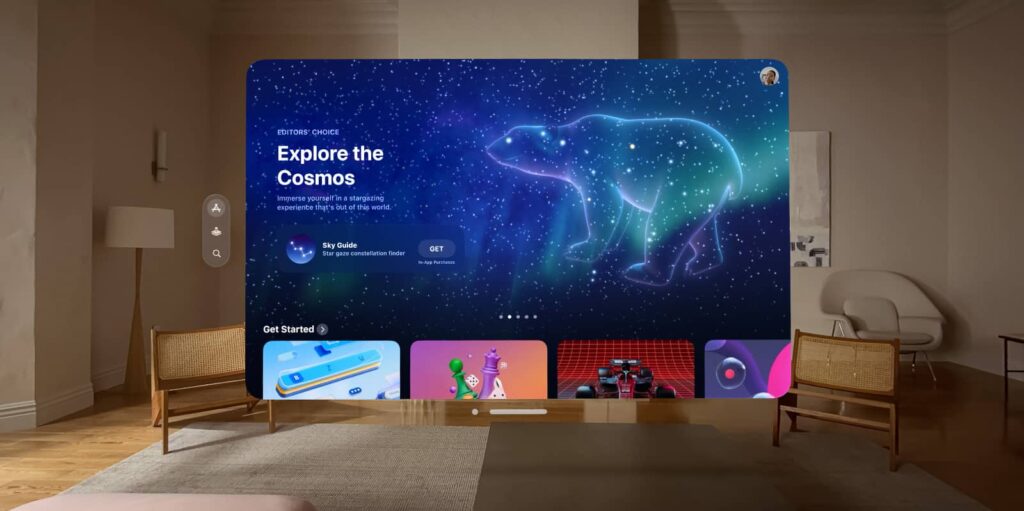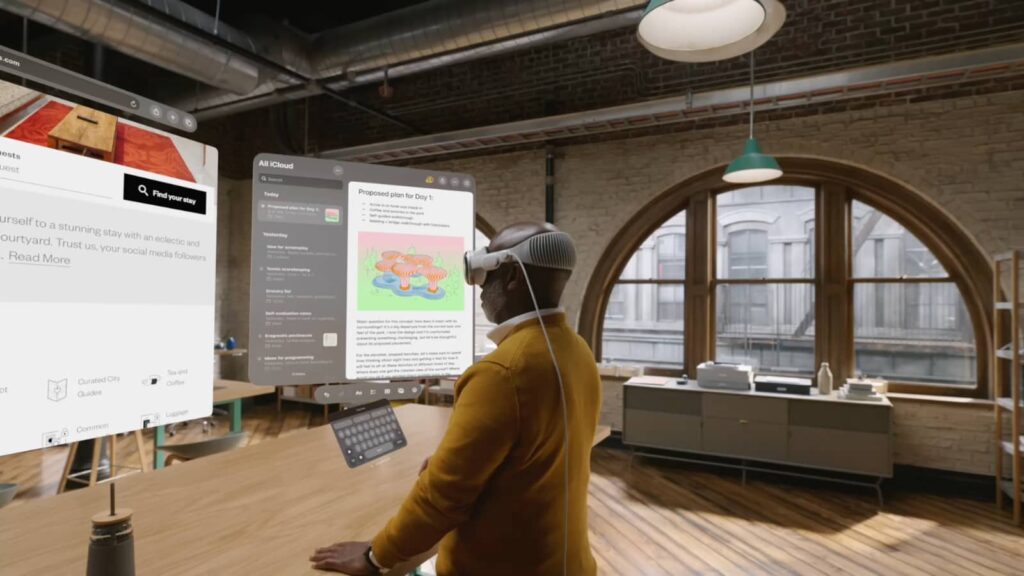Don’t call augmented or virtual reality a passing fad, as Apple reveals the headset it’s been working on and a new OS to go with it. Just don’t expect it to be cheap.
While Apple’s WWDC event held a bigger MacBook Air and the resurrection of the Mac Pro, not to mention a preview of what iOS 17 has in store for iPhone owners, there was a much bigger story going on.
In fact, one could argue it’s the biggest announcement for Apple all week long: confirmation of Apple’s AR and VR ambitions.
At WWDC 23, Apple announced that something has been in development for a while, and that the something is a spatial computer called the “Apple Vision Pro”, set to arrive next year, first in the US and with more countries later on.
It’s a complex beast this one, and not a simple story, taking the VR headset you might have seen from the likes of Meta’s (formerly Oculus) Quest and HTC’s Vive, but giving it more panache and that style only Apple is known for. The hardware even goes beyond that, because there are things here we’re not sure any virtual reality or augmented reality manufacturer has thought of, and this requires a bit of a deep dive.
A spatial computer
More than just “another head-mounted display”, because headsets can often be lumped into this category, Vision Pro is a standalone computer that can be used for more than entertainment experiences, supporting Apple’s Magic Keyboard and Magic Trackpad for work, and allowing the hardware to let you project your working environment into a giant room-sized experience.
As it is, “traditional” VR headsets and head-mounted displays allow you to feel as if the experience is massive due to how our brains interpret having two screens so close to our eyes. Every headset accomplishes this, but only VR and AR headsets deliver the tracking that allows that picture to move about with your head.
Apple Vision Pro will use two 4K micro-OLED screens to do this, set at eye-widths apart to make you feel as if you’re in the picture. Special lenses help improve the clarity, and people with glasses can use Zeiss Optical Inserts to make sure they can see the picture perfectly, as well.
It goes beyond the screens, though. If it were just screens, this would just be a head-mounted display. To help complete the tracking and the picture, there’s an eye-tracking system inside powered by high-speed cameras and a ring of LEDs shining invisible light patterns onto your eyes to control the input, effectively giving you some eye control.
Bringing this all together is a new chip from Apple, the R1, which takes input from the 12 cameras it uses, both inside and outside the headset, as well as five sensors and six microphones, support for spatial audio, all while using the same chip used in the 2022 MacBook Air and this year’s iPad Pro, the Apple M2.
All of that helps make sure the data comes alive on screen, because this isn’t just about data.
More than just entertainment
While Apple is making sure several titles from its Apple Arcade gaming service are compatible with the headset, there’s more than entertainment at the core here.
The Apple Vision Pro can be used in place of a computer because it is a computer, thanks in part to its operating system, visionOS.
It continues the camel case naming scheme programmers use and that we’ve seen on iOS and macOS (with a lowercase name followed by the word “OS”), but there’s more than just a similar name here. A lot more.
There’s a support for an app system with apps in any position around your space, using cameras to basically project the apps into a real-world interface, a little like Minority Report, except for your own view.
The Vision Pro headset can connect to a Mac and act like a portable display, transferring the apps you might already use into a virtual system, and essentially giving you more space to see everything.
That’s a leap ahead the concept of VR working back when we tried it years ago, attempting virtual reality work with the then-HTC Vive, and basically making the whole thing that much more accessible.
Entertainment can, of course, be changed, and while games are a big part of that, it’s also going to be ideal for photos and videos, which gain a bigger space to be viewed, as well.
Panoramic images can wrap around you, helping you to feel like you’re there, while videos can be more interactive, thanks in part. To the size and support for spatial audio in recordings.
And while theatrical movies can feel bigger like having a 30 metre projected personal cinema in your own headset, there’s also the potential for 3D movies sans-glasses, because the headset is already technically doing that for you.
As part of the headset, Apple notes the Vision Pro includes a three-dimensional camera that can capture more interactive videos, though how that works hasn’t quite been detailed.
Connecting you to the real world
While the world of VR is a key part of the Apple Vision Pro spatial computer, it won’t completely remove you from the real world, and will use the same Digital Crown controller as on the Apple Watch and AirPods Max headphones to let you dial in how much of your world you see versus the virtual world.
At the same time, Apple has built in a technology it calls “EyeSight”, which not only lets the wearer of the Vision Pro see the world in a semi-transparent way, but also allows others to see a rough idea of what the user wearing the headset is looking at, and can show their eyes underneath it all.
In the end, it all might just look like someone is wearing a dark set of ski goggles in the same room as people who aren’t, all while they’re controlling a complex spatial computer.
All of this runs on a battery wired to the headset and capable of running for two hours, though it can be plugged in if needed to run for longer.
“Today marks the beginning of a new era for computing,” said Tim Cook, CEO of Apple.
“Just as the Mac introduced us to personal computing, and iPhone introduced us to mobile computing, Apple Vision Pro introduces us to spatial computing,” he said.
“Built upon decades of Apple innovation, Vision Pro is years ahead and unlike anything created before — with a revolutionary new input system and thousands of groundbreaking innovations. It unlocks incredible experiences for our users and exciting new opportunities for our developers.”
Australian pricing and availability for the Apple Vision Pro
Unfortunately, there’s no word yet on when Australians will be able to try the Vision Pro for themselves, likely at an Apple Store across the country.
The headset will launch first in America early next year, where it will arrive with a price tag starting a $3499 USD, which will likely see the Vision Pro priced over $5K in Australia alone.
Locally, we suspect Australia will see the headset fairly close to a US launch, partially because Australia tends to get these devices largely alongside US releases. But there’s a lot of time between now and 2024, so we’ll just have to stay tuned.











